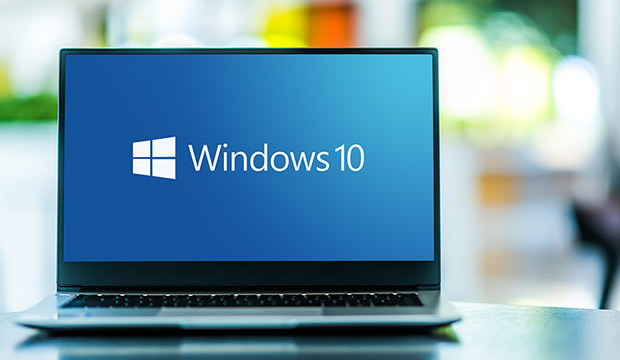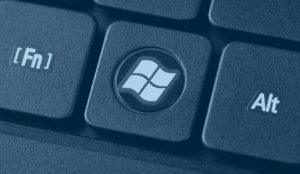Microsoft quietly edited a document on its website over the weekend to reveal it’s planning to end support for Windows 10 Home and Pro on October 14, 2025.
The revelation comes just before Microsoft’s “What’s Next Windows” event scheduled for June 24 and amidst hints from CEO Satya Nadella that a major new version of Windows is in the wings.
Windows 10 was originally released in 2015, so 2025 would be in the typical 10-year time frame Microsoft allots to supporting an operating system version.
A new version of Windows could be Microsoft’s way of stoking a PC market made hot by the pandemic.
“With more people working remotely, and likely to continue to do so in the future, there may be increased interest in replacing existing PCs or acquiring new PCs, and a new major release of an operating system can keep people interested in new hardware,” observed Michael Cherry, a Windows analyst at Directions on Microsoft, an independent IT advisory service focused exclusively on Microsoft based in Kirkland, Wash.
“But it requires compelling features, such as improvements to security or enabling a new class of applications to really drive momentum to change an OS,” he told TechNewsWorld. “It cannot merely be change for the sake of change.”
Windows by Any Other Name
In the old days, the name of the next version of Windows would be simple: Windows 11. But when Windows 10 was introduced, Microsoft declared it would be the last version with a number. That’s led to speculation about whether Microsoft will drop Windows as the name for its operating system.
“I wouldn’t be surprised if they did. It’s probably time for a branding update,” Jim McGregor, founder and principal analyst at Tirias Research, a high-tech research and advisory firm in Phoenix, told TechNewsWorld.
Since there is significant value in the Windows trademark, Cherry believes Microsoft will retain it in some form.
“They could possibly benefit from just dropping the 10, and making Windows the sole name of the OS, with some other name or code name designating a particular release or version,” he said.
Apple did that when it ditched OS X and went to macOS. Versions of macOS are designated by place names, like Sierra and Monterey.
“Keep in mind, that there are versions — Windows 7, Windows 8, and Windows 10 — and editions — Home, Pro, and Enterprise — to keep the naming more confusing than it needs to be,” he added.
“It would be great if they would drop the editions, but editions are used to create a feature and pricing differential,” he added.
Paying for Windows?
Pricing could be an issue for the new Windows.
“Microsoft has retained the same business model because it’s been a cash cow, but as Microsoft moves on toward more cloud services, their model has been changing, so it’s not surprising to see their Windows model change as well,” observed McGregor.
“I would try to roll it into a package where it includes other products,” he suggested. “So you’re not just paying for Windows. You’re paying for Office and a bunch of other apps.”
“You’re paying for a suite, much like you pay for cable TV today,” he continued. “You get a whole bunch of crap you don’t want, but if you want cable, you’re going to pay the monthly fee. I would be surprised if that isn’t what ends up happening.”
If the OS is preinstalled on a PC, then the cost of the OS is built into the purchase price, Cherry explained.
“For people who have an existing device, capable of running the new OS, then it becomes a function of whether the intent is to spur new sales of the OS, or keep people on an OS versus switching to a competing OS,” he said.
“Likely there will be some mix of free to people who are on a currently supported version, and potentially a cost for laggards who are not on a currently supported version,” he added.
Windows Subscription Service
Although Microsoft will continue to charge PC makers who preinstall Windows on their machines because that remains a significant source of revenue to Microsoft, chances are upgrades to the new OS will be free, maintained Ross Rubin, the principal analyst at Reticle Research, a consumer technology advisory firm in New York City.
Even the fee for preinstalling the OS may be averted in some cases. For example, Microsoft waived the fee for installing Windows on tablets in an attempt to cut into the iPad market.
“It wouldn’t be surprising if there were a fee waiver for certain PC designs that were more Chromebook-like,” Rubin told TechNewsWorld.
He added that Microsoft might try a hybrid approach to pricing the new OS.
“Microsoft has a lot of versions of Windows — home, professional, enterprise — so a possibility is they could make a baseline version of Windows available for free and if you want more capability, then they would charge you for that,” he said.
Since many companies, including Microsoft, have become obsessed with charging monthly fees for software, might that be a pricing alternative for the new Windows?
“It would be very difficult for them to compete against Apple and Google, if they forced a subscription fee just for Windows,” Rubin asserted.
Flexible Sunset
Although the official sunset date for Windows 10 is in October 2025, there may be some wiggle room in that deadline.
“After a Windows version is officially retired, they usually support it for two years or so to give enterprises time to change,” McGregor noted. “Consumers, though, may never convert over.”
Rubin explained that Microsoft has a history of extending support for versions of Windows many years beyond the announced sunset date.
“Given the amount of time Windows 10 has been the flagship operating system — it’s a got a huge installed base — it wouldn’t be surprising to see that date pushed out,” he said.
“Sometimes it has to do with the uptake of whatever comes after it,” he continued. “If the next version doesn’t resonate, then Microsoft would be inclined to keep Windows 10 around longer.”
“If it is a good solid release, supports existing applications, and enables new applications or workflows, it will likely follow a similar trajectory to Windows 7 and Windows 10,” added Cherry. “If the OS is unstable or the changes are too drastic or uninteresting then it will likely follow Windows 8.”


























































